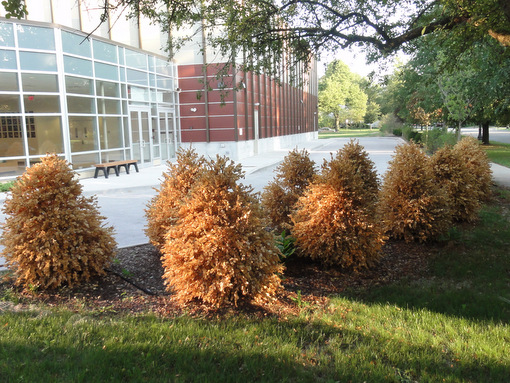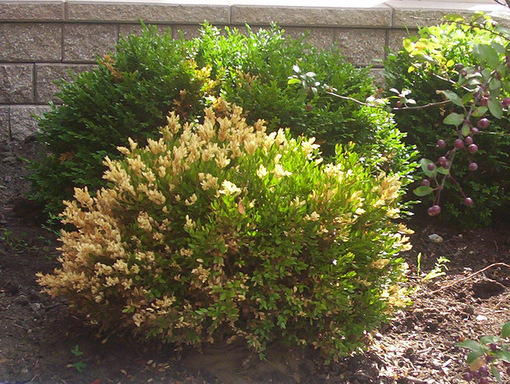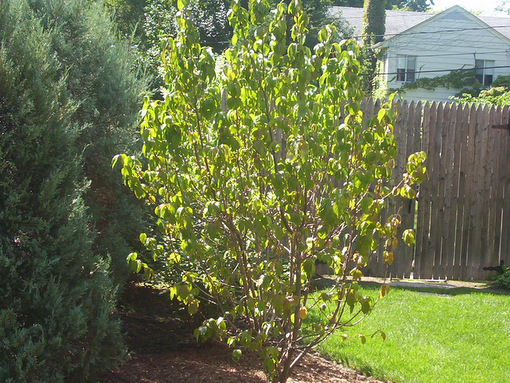It’s dry out there.
Not enough rain in recent weeks is causing plants to weaken, turn brown and shrivel up. They become more vulnerable to future insect and disease problems, and will die from lack of water.
Trees, shrubs, evergreens and groundcover planted within the last two years are considered newly planted, and are particularly susceptible to drought stress. All plants need to receive adequate moisture during dry periods. Watering should penetrate 8–10” into the root zone to be adequate. This means at least one hour of watering with an oscillating sprinkler. A measured inch of water will do the job. Put a pie plate in the area being sprinkled so that you know when a full inch has been applied. This may involve soaking your plants with a hose or sprinkler for several hours.
For lawns, use a high quality oscillating sprinkler. Lawns should be watered preferably early in the morning, before 10 a.m. Mowing high helps reduce lawn stress.
If you have an irrigation system, we recommend checking it to be sure all of your plants are getting watered. New plant growth can block the spray of irrigation heads. The amount of watering time on larger plants will need to be increased.
A general rule: Keep watering throughout the growing season, which is the time between the last and first frost, until around Thanksgiving, when temperatures drop below 45 degrees Fahrenheit.
You’ll be rewarded with a happy, healthy garden next spring.




[…] Nature’s Perspective Landscaping is an Evanston-based company that designs, builds and maintains “outdoor settings,” and they offer some advice their blog about watering: […]